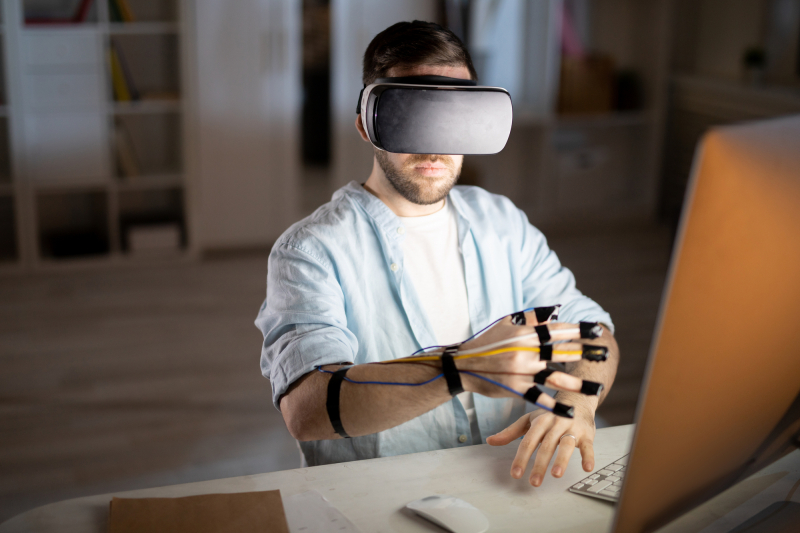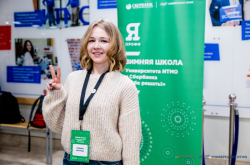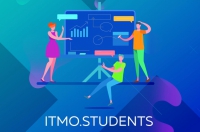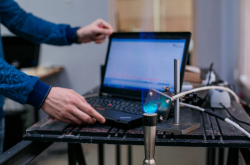Multiverse Kitchen VR app
Created by Oleg Fedyukovich:
Everything you do in Multiverse Kitchen happens in Paris, in a cosy small flat belonging to Alfredo Linguini, a young chef from Ratatouille (2007) and Remi, a rat and also the main character of the story. However, this flat is also located in the multiverse, where different worlds are linked by portals, which is why here you can cook Krabby Patties, Minecraft cakes, or any other dishes from your favorite cartoons, games, series, or anime.
I chose a cooking game as the best setting to demonstrate how haptic gloves work, seeing as we rely on fine motor skills during our kitchen experiments. Haptic gloves and other similar force-feedback devices bring another dimension into virtual reality, complimenting the traditional image and sounds of VR headsets. When you are wearing the gloves, they stop your fingers in the shape of the object you are trying to grasp, thus making you feel that you are actually holding it.
However, the project had gone a long way before I could implement the gloves into it. First, I developed the first level for the game and artist Polina Golubova created the setting. She has really done a great job: after the final rendering, I started to think our graphics were better than in the original cartoon. When this groundwork was done, I assembled the prototype of my gloves: chose the configuration I needed, downloaded the blueprints, radio circuits, and software, tweaked them, printed them out, soldered them together, and calibrated them. At first, the gloves worked with a test app from LucidVR, so my next step was integrating force feedback and finger tracking into the app. When everything was running properly, I still had enough time to develop a second level for the game.
The game is now fully playable, but there is still room for improvement – for instance, I could add more levels. As I was working on the project, I have reached my goals in acquiring the experience of working with such technologies, as well as knowledge I can use in the future. For now, I am not planning to develop the game further.
Virtual Museum of VR, AR, and Mixed Reality Technologies
Created by Mikhail Komyshan:
This project was suggested to me by Artem Smolin, the head of the educational program and ITMO’s Center of Usability and Mixed Reality. At the time, I already had experience in developing apps for a VR headset from one of our courses. We made that project in a team and I really liked both developing and testing it, so I decided it would be good to go further into the field within my thesis project.
My goal was to create a virtual museum that can be viewed in VR headsets. As I was working on my project, I went through each stage of app development: from conceptualization, prototyping, and modelling to creating scenes and mechanics, and, eventually, testing. My location was inspired by the film universes seen in Tron, The Matrix, and Johnny Mnemonic.
From the starting point, users can enter any exhibition in any of the other six locations connected with each other via teleports. Apart from looking around themselves, users can also read a historical overview of VR technology development and watch short videos on the topic. Moreover, here they can learn more about the field’s pioneers, Morton Heilig and Ivan Sutherland. In the future, Dr. Smolin is planning to use the new VR museum in his courses on VR/AR technologies.
Baby in the Womb VR location
Created by Elena Ponomarenko:
My topic was suggested by Dr. Smolin, my thesis supervisor, and I was excited to start working on it. Since my school years, I have been equally interested in IT and biology, so I was dreaming to create a healthcare-related IT product – and I did it by developing the Baby in the Womb VR location.
Inside it, users can take the place of a child about to be born. For some of us, prenatal development is a mysterious, sometimes even scary world. My project lifts this veil of mystery by allowing us to reconnect with our inner child in this unique environment. In order to create the effect of actually being in dark and moist surroundings, I added dimmed pink lighting, slowly floating bright particles, and other visual effects, as well as muffled music and heartbeat.
There, users can also move the child’s hands with controllers. I relied on medical illustrations and consulted a healthcare professional to make the 3D model of a child detailed and realistic. There is also a storyline in this location: after some time the light fades completely, the heartbeat speeds up and the music gets louder – then users see a beam of light and hear the child crying. This ending is meant to symbolize the process of being born and will leave everyone with different emotions – it’s hard not to feel something when you are going through this.
In the future, other ways of interaction can be added, as well as different environments. I think an updated version of the project can be used in different situations. For instance, future parents can experience what their child is about to go through and in this way feel closer to them. For children, this would be a chance to peek into the unique and hidden world inside the human body. Moreover, the VR location can be used in therapy.
Fireworks on January 1, 1704 – a VR location
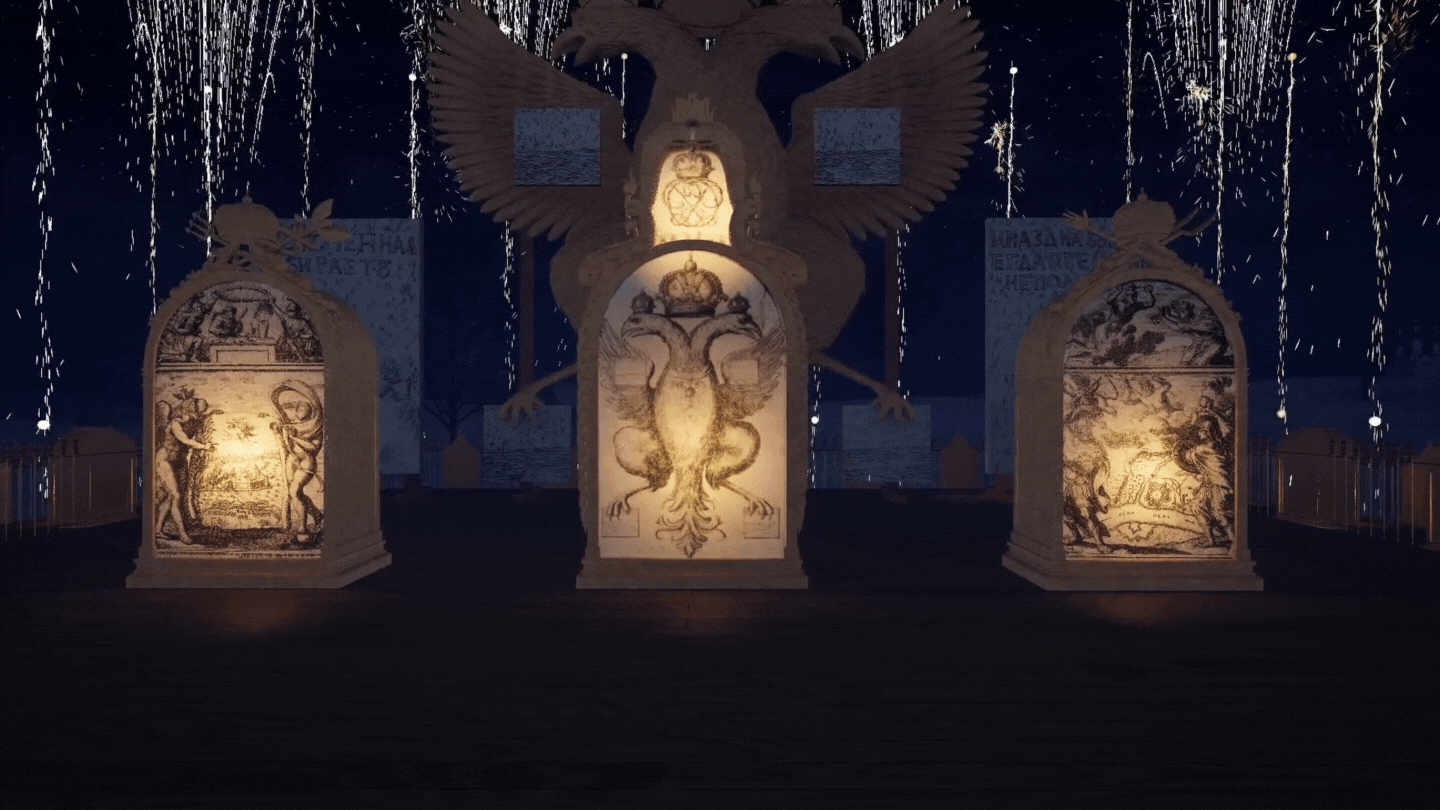
Created by Anastasia Bagritsevich and Maria Levkovskaya. Anastasia shares:
When I saw the topic of my groupmate Maria Levkovskaya, I got really interested and decided to join her project. I had worked in 3D Max and Blender before, so I was curious to develop special effects and fireworks animation for the location. Moreover, I was excited to learn more about this historic period, which I wasn’t really an expert on before.
Our project allows users to see what fireworks were like back in the day. At the heart of the VR location are over 20 street lamps with different images. If you approach them, you will see glowing candles inside, just like in real life. Apart from watching a colorful fireworks display, users will have the chance to learn some interesting titbits integrated into the location as fact notes.
We decided to share responsibilities within the project. While I was responsible for finding fireworks references to develop the animation on Unreal Engine 5, Maria was responsible for the location’s 3D model. Even though the project is complete, we can still polish it further by making the fireworks interactive, tweaking the camera settings to make visual perception more realistic, adding more detailed animation, and so on. In other words, we can implement nearly anything we want!
